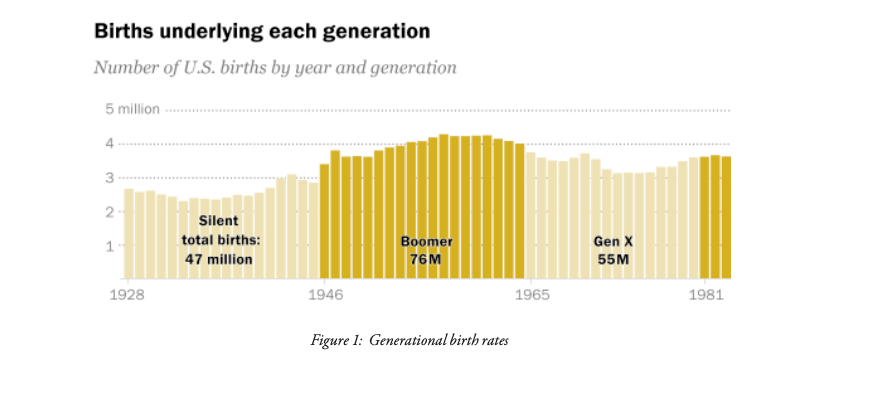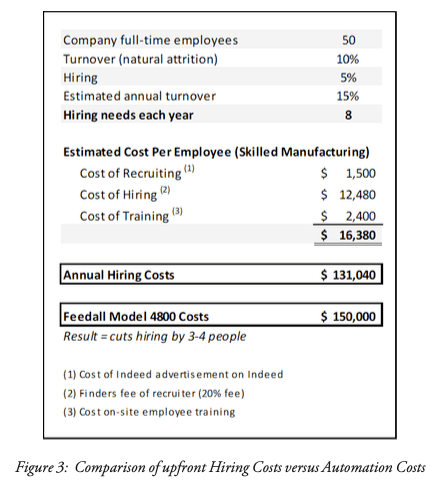 By Jon Cocco
By Jon Cocco
I walked into Chipotle last week and waited for over an hour for my Burrito Bowl. Then I went home to find our electric dog fence was broken. No problem, I called the local electric fence company and asked for a repair technician to stop by. Well, just like my burrito, they told me I had to wait – – until February to fix it – – because they have no workers. Unfortunately, Cooper (my 100 lb. Bernese Mountain Dog) would be long gone by that point on a path to neighborhood freedom. So, where is everyone? I keep asking my friends and co-workers if we are in the Twilight Zone. Remember that episode where the guy is suddenly all alone on earth (Twilight Episode – Where is Everyone)? I am starting to think we are now living in the Twilight Zone with the incredible vanishing workforce.
Let’s fast forward to where it hurts the most – employers. As a consumer, I can live without my burrito for lunch. I can even learn how to fix my electric dog fence, but as an employer I cannot live without employees. In this article, I have set out to find some answers to three questions:
1. Where are all the workers?
2. Will the workers ever come back?
3. What should we (employers) do about it?
By the end of this article, I hope you will not only understand the answers to these questions but find a path forward on how to work in this new world of the vanishing workforce.
Where Are All the Workers?
U.S. employers are trying to fill more than 10 million job openings to meet current vacancies and keep up with the surging consumer demand. While these are good problems to have in an economic turnaround, it just does not make sense where these 10 million employees are. If you compare the current labor force to pre-pandemic levels, the U.S. is still missing 4.3 million workers [1] (in addition to the 6 million new positions needed). This employment gap highlights that this is not just a growth challenge, but a worker participating issue.
So, the real question to ask is not ‘Where are these workers?’, but rather ‘Why are these past employees not willing to participate in the workforce? ’
Digging deeper into this vanishing workforce, the federal government reported 20 million resignations between April and August this year. This is 60% more resignations than the same period a year earlier. The reasons for these resignations span from taking early retirement, going back to school, leaving the workforce to care for a family member, or just taking a break because of job burn-out. These reasons not only have short-term implications on employment but also long-term effects on the real availability of our workforce. According to a Wall Street Journal survey, 22 of 52 economists predict that workforce participation will never return to its pre-pandemic level.
Will They Ever Come Back?
The sectors most at risk with the vanishing workforce are manufacturing, retail, and professional services. Lower paying jobs in manufacturing, and retail have driven many people out of the workforce because of low switching costs and government subsidies. With schools reopening, expiring unemployment benefits and, continued inflation, we should expect these workers to reenter at some point. However, we have not seen the resurgence of working participation in these segments. It begs the question of whether they will be coming back.
The issue employers need to be aware of is that lower worker availability is now a systemic problem because of the generation birth rate gap (see Figure 1). This issue is called the Great Sansdemic. The Baby Boomers – those born between 1946 and 1964 – are quickly exiting the workforce creating a void in the labor market. Gen Xers – those born between 1964 and 1980 – had a 25% lower annual birth rate than baby boomers (3.4 million versus 4.2 million). About 28.6 million Baby Boomers reported in the third quarter of 2020 that they were out of the labor force due to retirement. And surprisingly, many of them left before the expected retirement age of 65. The growing number of Baby Boomer retirements nationwide is accelerating, raising concerns about losing a large portion of the workforce sooner than expected (see Figure 2).
This demographic data, and the overhanging issue of early retirements, point to a broader issue than the short-term challenges created by the pandemic. It signals to employers that the hiring issues we are experiencing this year are not going away any time soon. The constant use of job postings, the hiring signs outside your manufacturing facilities, and the increased wages are not going away anytime soon. The focus of employers needs to be ‘What should you do now?’, given this is not a short-term issue.


What Should You Do Now?
My answer is simple — Invest in automation. Gone are the days where you must feel guilty about putting in automation processes that have a risk of eliminating jobs. Over the next ten years, there will be fewer employees to fill positions in the U.S., and as employers, we need to start addressing this issue creatively through innovation. Innovation has always been the backbone of how the U.S. has solved macroeconomic issues throughout its history.
We need employers to shift their views toward innovation and capital spending driven by automation and artificial intelligence (AI). One way to create a new awareness is to rethink how budgets are compared and approved by companies. In the manufacturing world, it takes an Act-of-God to an approved capital budget. The process is fraught with too much bureaucracy and a lack of the correct long-term metrics. I know this firsthand when I was a senior member of a fortune 100 manufacturing company. Unrealistic financial thresholds of payback, generate a short-term return benefit and ultimately extinguish employee motivation of bringing long- term improvement ideas to the forefront.

Metrics that Matter
My argument is to take all your annual hiring expenses and compare that to the capital you have allocated to improving your productivity. We pulled together an analysis for a customer where the upfront capital costs of one of our automation machines cut the company’s annual hiring expenses in half (see Figure 3). Most companies never compare a hiring budget to a capital expense budget because they are managed by different people. In doing so, our customer was able to divert planned hiring expenses to capitalized expenses. The net result is it not only saved on the upfront costs but also generated ongoing savings with improved productivity.
Conclusion
While we don’t live in the Twilight Zone, we will confront the ongoing challenge of the vanishing workforce. By looking at this problem through the lens of automation, there will be solutions to help you out in both the short and long term. And as always, I am here to help if you have any questions on how to get started making your in case to diverting your hiring budget towards a capital automation budget.
References:
1. Wall Street Journal: 4.3 Million Workers Are Missing. Where Did They Go? The Balance by Josh Mitchell, October 14, 2021.
2. Bain & Company: Labor 2030: The Collision of Demographics, Automation and Inequality, 2017.
Author Jon Cocco is the owner and CEO of Feedall Automation in Cleveland, Ohio. He may be reached at jcocco@feedall.com or 440-942-8100 or follow him on LinkedIn at www.linkedin.com/in/joncocco/. For additional information, visit www.feedall.com.
